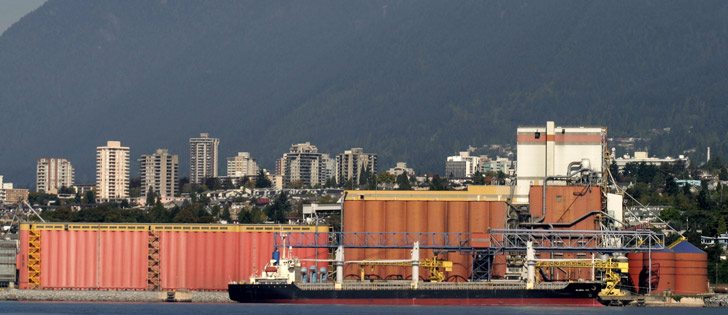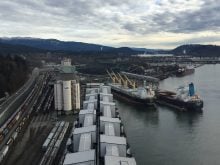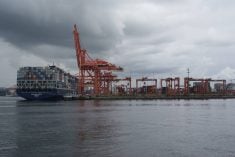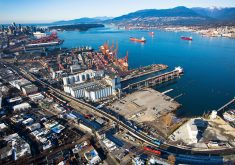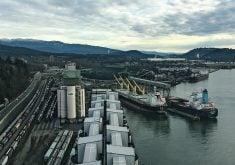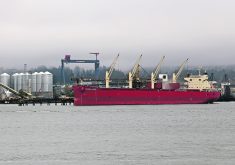Unlike the Panama Canal, the Port of Vancouver isn’t a global icon of the shipping industry. But, recently, the port is attracting more investment than the famous canal.
In 2016, Panama officially unveiled its US$5.4 billion expansion of the canal, which will allow larger vessels to move through the locks.
In comparison, more than C$7 billion has been spent on the Port of Vancouver in the last several years, and there are plans to invest billions more.
“Through the various investment programs … we’ve already put $7.5 billion into infrastructure development,” said Doug Mills, Port of Vancouver senior account representative, who spoke at the Fields on Wheels Conference in Winnipeg in October.
Read Also

Research looks to control flea beetles with RNAi
A Vancouver agri-tech company wants to give canola growers another weapon in the never-ending battle against flea beetles.
“We’re already planning for the next … $9.5 billion (in investment). This is unprecedented growth.”
Companies like Viterra, Richardson and G3 have spent or are investing hundreds of millions to upgrade their terminals or build new facilities in Vancouver. Container terminals and bulk commodity companies have also committed to expansion projects.
“We saw a wave of private investment come like nobody’s business,” Mills said.
“Virtually every terminal in our gateway is either being built, re-developed, being expanded or employing efficiency measures to increase their productivity.”
Billions are also being spent on roads, railways and bridges in British Columbia’s Lower Mainland so goods and commodities can move efficiently in and out of the port.
“The assets that we’re building primarily are infrastructure to support those private investments,” Mills said. “We’re constantly modelling the road and rail networks into our jurisdiction to understand where the next set of bottlenecks (are).”
Greg Hamilton, corporate development manager with Canadian National Railway, said CN moves a massive amount of goods through Vancouver.
“CN handled last year around 800,000 cars in and through Vancouver,” he said. “The total number of car loads that CN will handle, throughout the year of 2015, was about 5.5 million.
About 35 percent of those 800,000 train cars carried grain and fertilizer.
Hamilton said investments in infrastructure networks are critical in the Vancouver region because land is at a premium.
“There’s not a lot of room to grow the infrastructure: the port or rail,” he said. “So the key is to increase the fluidity and capacity of the land base that you have.”
One key piece of infrastructure for CN is the Second Narrows Bridge, a vertical lift rail bridge that connects Vancouver to the North Shore.
“Marine traffic has priority through this corridor … and with a potential increase in deep sea traffic east of the bridge, there is a potential for future increases in bridge outage,” Hamilton said. “So we need to push even more through a decreasing window of available.”
The port and the surrounding infrastructure can now handle the existing volume of grain, but Mills and others are planning for future growth.
“For the next 10 to 15 years, of which G3 is a part of and many other projects like Richardson and Cargill, we believe we have capacity to meet those demands,” he said. “What we’re looking at is the next generation of investments.”
Contact robert.arnason@producer.com




